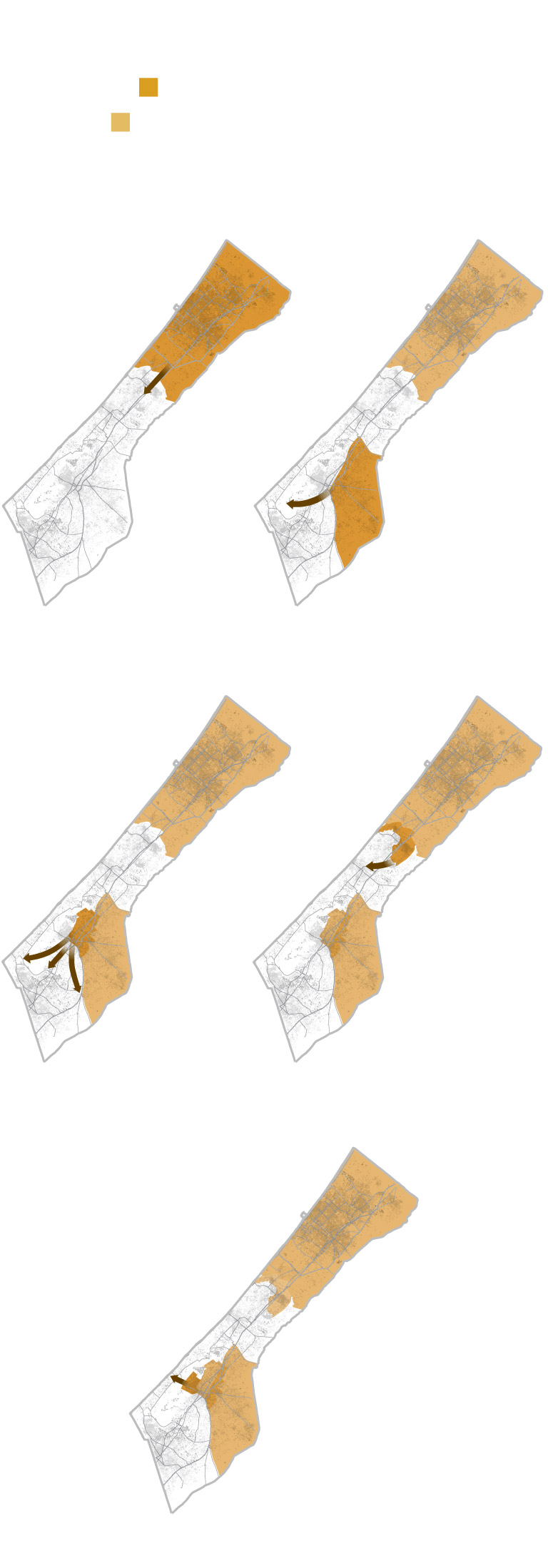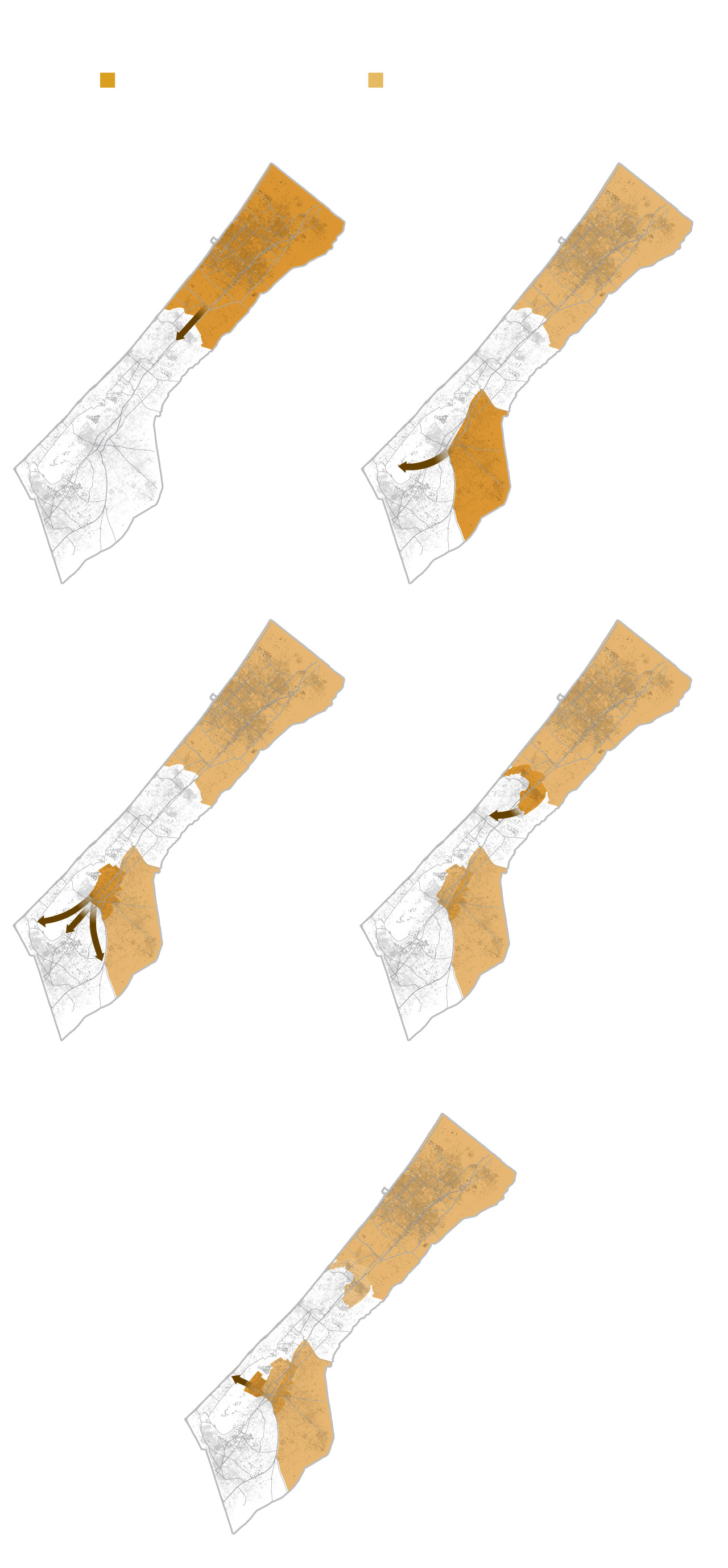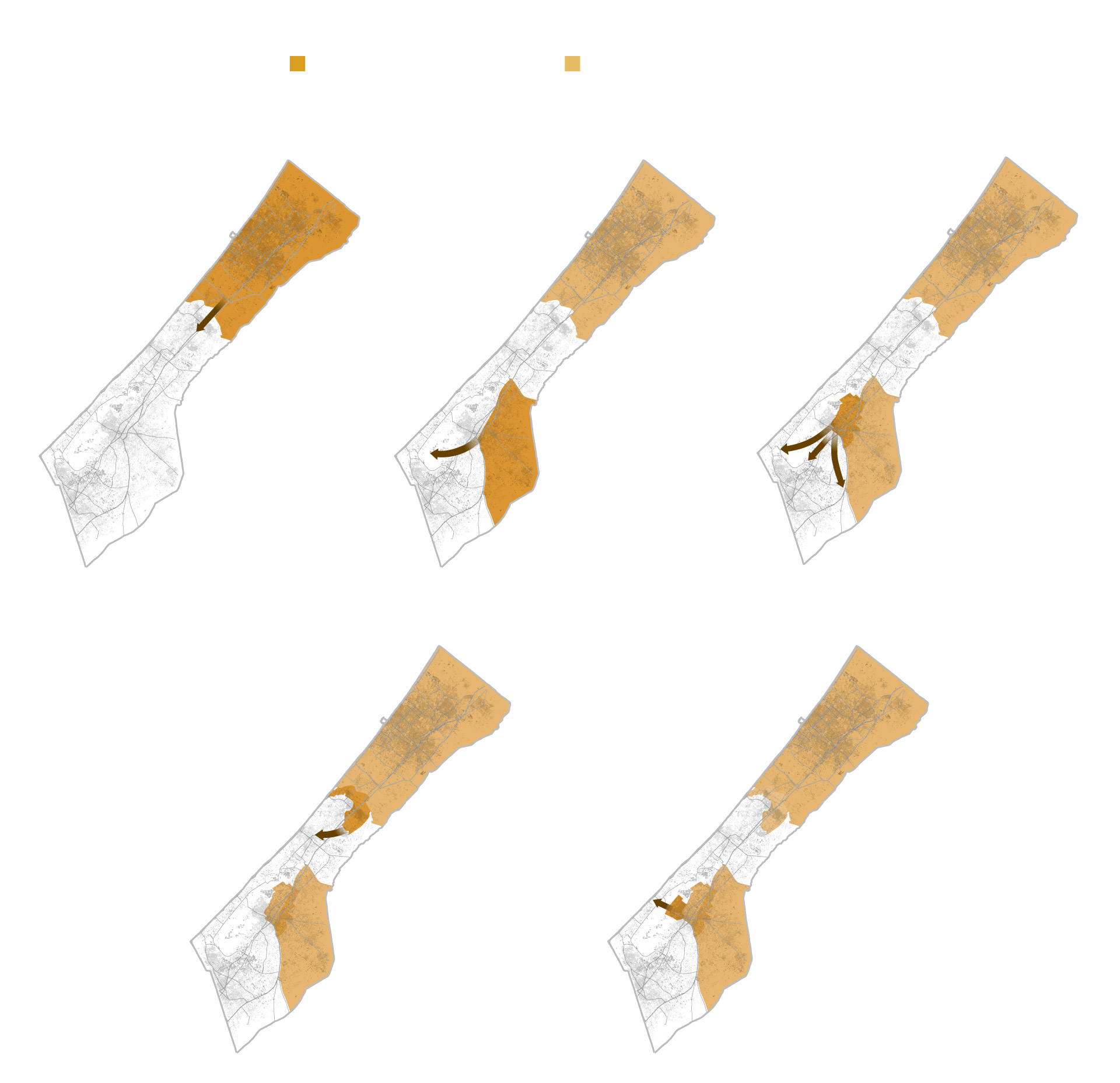Aid workers and humanitarian organizations say Rafah is already dangerously overcrowded with displaced civilians, many of whom are sick or on the brink of starvation. They said there was a risk of further conflict in the area causing major damage.
“The loss of life that we will face if Israel descends into Gaza is enormous,” said Bob Kitchen, vice president for emergencies at the International Rescue Committee, a humanitarian relief organization operating in Gaza.
Nearly nine out of ten Palestinians in Gaza are displaced
Rafah's population has risen to “at least” 1.4 million people, according to the UN Office for Palestinian Affairs. Juliet Douma, director of communications for the agency, UNRWA, wrote in a message. “This is five times the pre-war population,” Douma said of Rafah, whose population was estimated at 280,000 before Oct. 7.
Israeli officials did not specify what its plans for Rafah would look like. The country's military has already carried out strikes in the area, and an airstrike near the city's Kuwaiti hospital in December killed at least 18 people, hospital staff said.
The war in Gaza has drastically reshaped the demographics of the region. Nearly nine out of ten people living in Gaza are now displaced, according to UN estimates, World Health Organization Director-General Tedros Adhanom Ghebreyesus said on Wednesday, adding that “more than 100,000 Gazans are dead, injured or missing and presumed dead.”
Before October 7, Gaza City in the north was the most populated part of the region.
- On October 13, six days after the start of the Hamas-led war on Israel, Israel ordered the evacuation of more than 1 million people living in areas above the Wadi Gaza wetlands. Many sought refuge in Gaza's second-largest city, Khan Younis, in the south.
- In early December, Israeli authorities ordered Palestinians in Khan Yunis to move to new areas as military operations continued in the city.
- More than half of Gaza's total population is now thought to be in Rafah, where many are “living in makeshift structures, tents or in the open,” said Jens Lark, spokesman for the UN Office for Humanitarian Affairs (OCHA). ), said Friday, saying the city had become a “pressure cooker of desperation.”

Timeline of evacuation calls
was previously in discharge

Timeline of evacuation calls
was previously in discharge

Timeline of evacuation calls
was previously in discharge

Timeline of evacuation calls
was previously in discharge
The escalating humanitarian crisis in Rafah
While Rafah straddles the border with Egypt, humanitarian groups have warned that the amount of aid crossing the border is insufficient to meet the needs of an increasingly desperate population.
Cindy McCain, head of the World Food Program, said, “People in Gaza are at risk of starvation miles from food trucks. said in an appeal for fresh action Allow more trucks into Gaza.
A Palestinian aid worker, who spoke on condition of anonymity because he was not authorized to speak publicly, wrote that it reminded him of the stories his grandfather told him about the living conditions of the post-1948 Israeli refugees. Arab War. The 200-square-foot tents can accommodate an entire family or two, the aid worker said.
Winter temperatures have added to the misery. “In this cold and rainy weather, a tent is the last place anyone wants to be!” They wrote.
Amid the crowding, health precautions were broken. “Thousands and thousands of people are sharing individual toilets,” Kitchen said, adding that IRC workers in Rafah saw “four to five hour queues” to use the bathrooms. Open defecation and urination create public health hazards.
“We're already seeing massive reports of severe watery diarrhea that, if tested, I think will prove to be cholera,” Kitchen said.
The humanitarian crisis is compounded by a political crisis this week, as at least ten Western governments cut funding to UNRWA, the main logistical force for aid in Gaza. The decision to freeze funding came after Israel shared a document that allegedly implicated more than a dozen UNRWA staff members in the October 7 attacks on Israel and widespread support for Hamas and other militant groups within the organization.